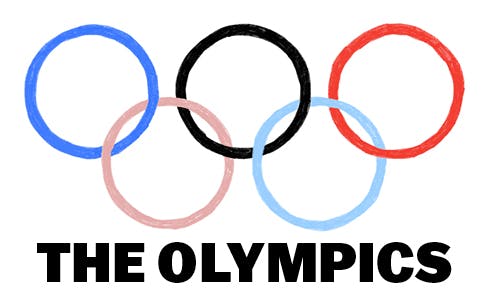
It has become a tradition in the weeks before the Olympic
Games for countries to reveal what their athletes will wear to the opening
ceremony, and for the internet to then respond with snarky commentary. I get it,
especially with questionable design choices over the years like blood-splattered-looking
skirt and blouse (Team Hungary, 2008) or McDonald’s-inspired
polo shirt and shorts (Team Spain, 2012).
As an Olympic athlete at the height of your career, you’re expected to wear the opening ceremony outfit proudly, but it must be a buzzkill when your country’s design choices miss the sartorial mark. On the other hand, when your country nails it—for example, the gradient capes worn by Japan during the 2000 Sydney opening ceremony—walking into the arena must be an even more extraordinary experience.
The opening ceremony outfit has its work cut out for it. It is each country’s first chance to say to the world: “This is who we are!” This is our heritage, our culture, and our ethos. And if that wasn’t hard enough, it needs to look good on a 4’11 90-pound gymnast and a 6’7 280-pound shot put thrower. I don’t envy the designer’s job.
Given those challenges, there’s been one opening ceremony
Olympic uniform in recent history that, for me, has been especially
successful—and progressive. During the 1984 summer games in Los Angeles, the 522
men and women of Team U.S.A. entered the Los Angeles Coliseum wearing red
and blue unisex Levi Strauss tracksuits, red sun visors, and white sneakers.
The American public had voted for the outfits based on three options. “It’s the
first time ever the public has been given a chance to get involved,” said Betty
Louis, director of Olympic merchandising for Levi in 1983. Democracy in action!
The tracksuits were gender neutral, a fashion-forward decision even today, 32 years later, when it’s de rigueur for a country to provide its male and female Olympians with gender-specific outfits. The uniforms were patriotic without making Mary Lou Retton or Carl Lewis look like they were walking American flags or insta-cowboys. Rather, according to the Milwaukee Journal, the outfits had “a ‘Star Trek’ look” because of the diagonal stripe across the chest—although I’d say it was more inspired by Run-D.M.C.’s signature tracksuits. Moreover, the sun visor, white kicks, and light-weight sport suit embraced the sunny, laid-back positivity that came with the California setting. That aesthetic, too, emphasized athletic prowess over a country club notion of American prosperity (I see you, Ralph Lauren.). As a result, the U.S. athletes looked relaxed and confident on their home turf, the way it’s okay to dress down when the party’s at your own house. Usually, it makes for a better party.
